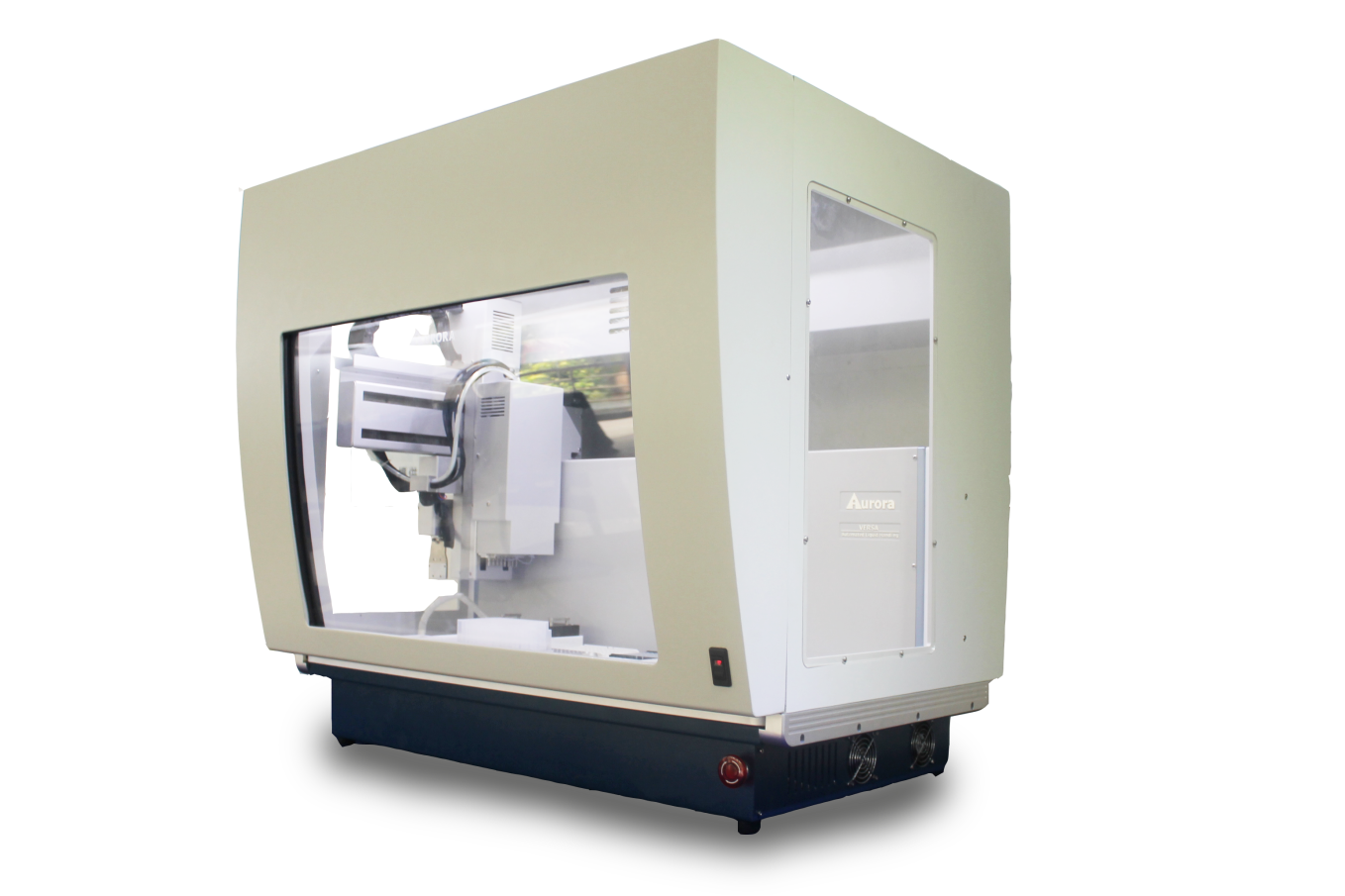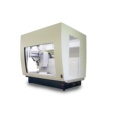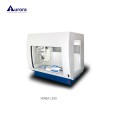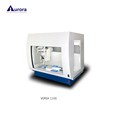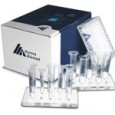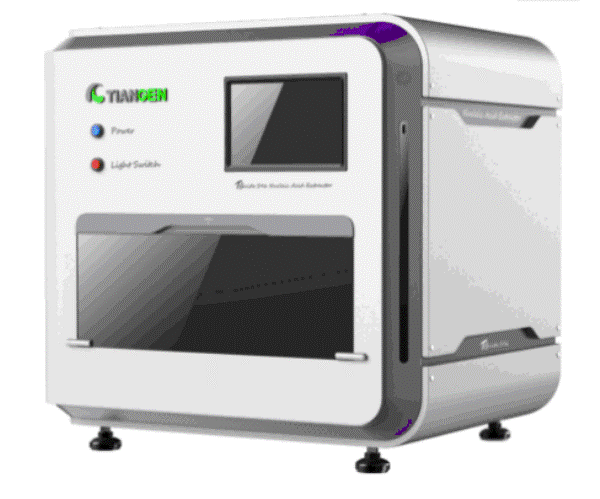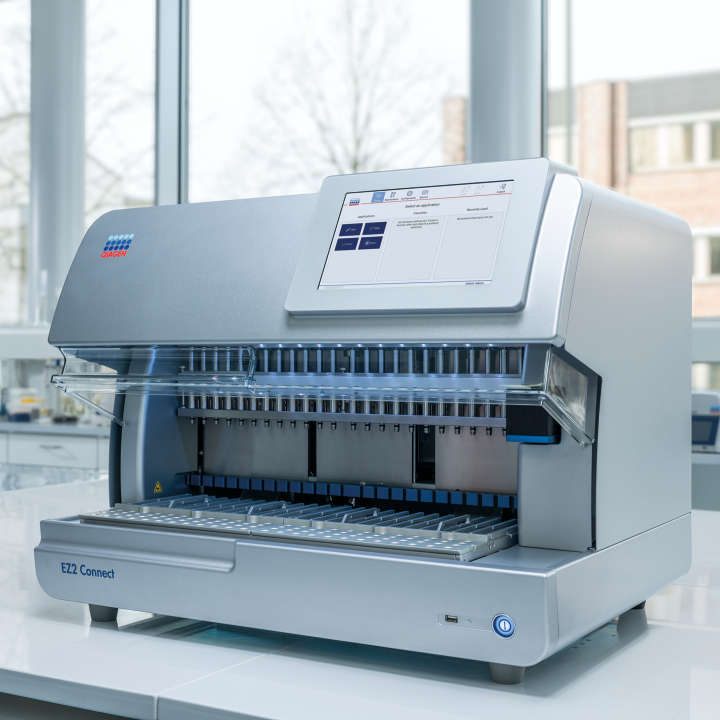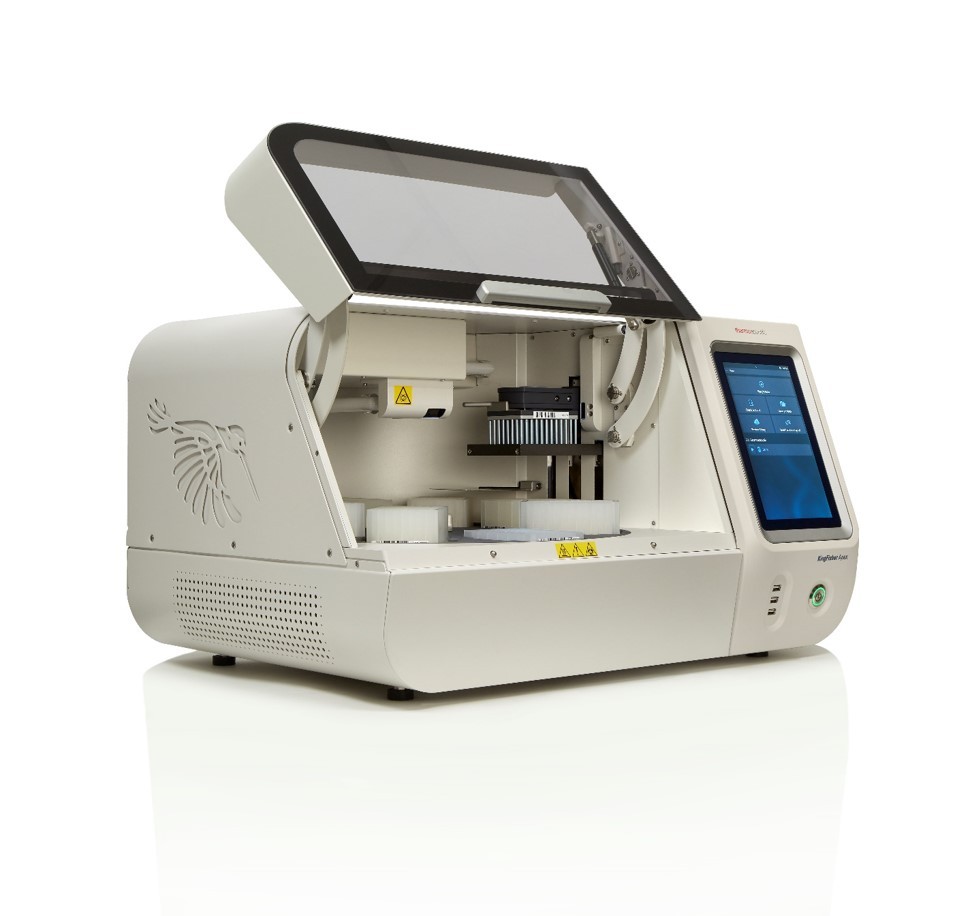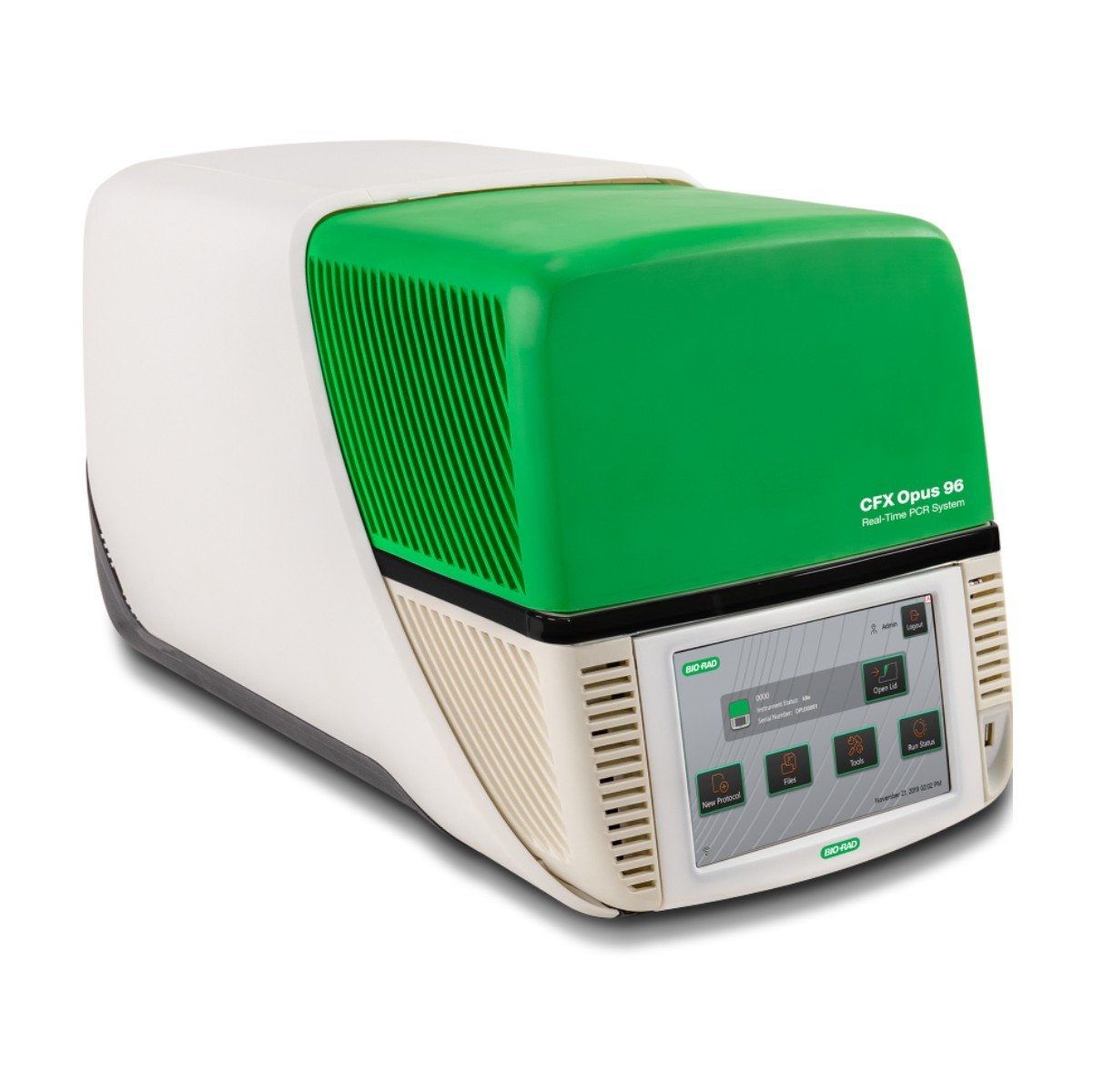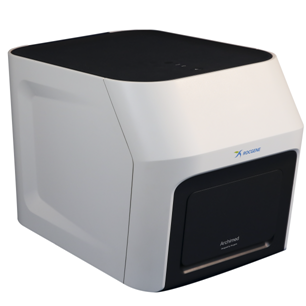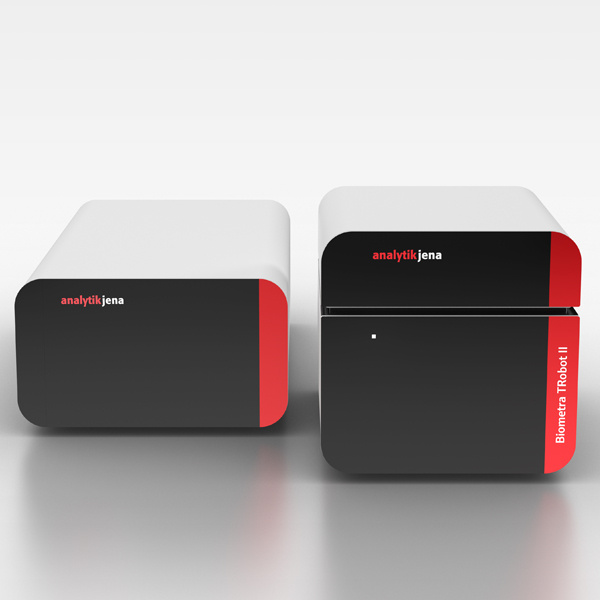快速检测禽流感在世界范围内的重要性是不可低估的。近年来,PCR和RT-PCR技术的发展加快了筛选过程,但样品制备工作相对滞后。Aurora Biomed通过验证VERSA 110 NAP/PCR构建工作站来解决这一问题,该工作站用于使用市售试剂盒自动执行流感病毒A/H5N1 RNA检测所涉及的样品制备步骤。对禽流感基因大小合适的扩增产物的检测表明,VERSA工作站可以成功地用于a/H5N1基因检测的自动化样品制备。
方案详情

*Correspondence should be addressed to Aurora Biomed Inc., 1001 E. Pender St., Vancouver, BC, Canada, V6A 1W2, Tel: 1-604-215-8700,Fax: 1-604-215-9700, info@aurorabiomed.com, www.aurorabiomed.com Automation of Reverse Transcription of Avian Influenza Viral RNAand Detection of H5N1 with VERSA Mini PCR Setup Workstation Sikander Gill, Rajwant Gill, Joy Goswami and Dong Liang Aurora Biomed Inc, Vancouver, BC, Canada l. Abstract In recent years, influenza virus H5N1 is being closely monitored by publichealth authorities for it’s potential as a major health pandemic. For thescreening and detecting this virus worldwide, automation is becoming animportant tool. At Aurora Biomed, automated sample preparation for thedetection of viral RNA from influenza A/H5N1 was developed using acommercially available kit. Liquid handling for various components of the kitwas carried out using the VERSA Mini PCR Setup Workstation. Thedetection of amplified products of about 191, 192, and 107bp indicate thatthe VERSA workstation can be used to automate the kit. In addition, theseresults suggest that the VERSA workstation is suitable for theprecautionary requirements of the kit : RNA sensitivity to degradation, PCRprocess sensitive to volume changes, and contamination issues. Il. Introduction Automation is slated to play an important role in the detection of avianinfluenza virus- the virus found chiefly in birds. However, natural infectionswith influenza A viruses have been reported in a variety of animal speciesincluding humans, pigs and birds1. In the ongoing effort to prevent wide-spread disease, robotic workstations with higher throughput can be usedto carry out large scale detection of this virus in avian or human samples. The H5N1 viral infection can be detected using ELISA, or PCR (end pointor quantitative)2. The detection process for end-point and quantitative PCRinvolves the isolation of viral genome (RNA), conversion of RNA into cDNAwhich is followed by amplification of the specific target(s) from the DNA.The primary purpose of automation is, therefore, to minimize the timeinvolved with sample preparation and reduce the cumbersome nature ofthe processes involved, while increasing the quality of the data. AuroraBiomed has launched the VERSA Mini PCR Setup Workstation, a costeffective tool to increase the throughput and reproducibility of the H5N1detection processes. ⅢII. Objectives To check for thermostability and sensitivity to degradation ofthe RNA during automation To automate reverse transcription of viral RNA To check automated distribution of three, kit-based master mixes To allow amplification of determinants from different genes ofviralRNA To develop a method for handling sensitive nucleic acids, likeRNA To check for cross contamination or false positive/negativeamplicons (if any) The validation of VERSA Mini PCR Setup Workstation was conductedusing the H5N1 detection kit supplied by Mediagnost (Reutlingen,Germany), as follows: IV.Materials & Methods 1. Tips (1000 and 20pL) were placed at deck position 8 and 1,respectively.Tip changer sequences were performed for each reagentand DNA sample. VERSA Mini PCRSetup Workstation 2. The vials of the lyophilized reaction mixes Rx-Mix A identification of A-type ofthe influenza virus), Rx-Mix H5 (for identification of hemagglutinin gene HA 5), and Rx-Mix N1 (for identification of neurminidase gene NA 1) provided in the kitwere placed in the appropriate slots on the cooling block at 4℃. 3.Reverse transcriptase, taq DNA polymerase, sterile nuclease free water, viralRNA, and negative controls were incubated in appropriate slots of the coolingblock. 4..The viral RNA sample and the negative controls were placed at deck position 5. 5.A 96-well PCR plate was placed at deck position 5.6.The protocol sequences were carried with VERSA Mini PCR SetupWorkstation. 7.1The Rx-Mixes were reconstituted from lyophilized reaction mixes by adding 470uL of nuclease free water to each of the Rx-Mix vials with the workstation and mixed with pipetting action of the workstation. 8.Aliquote of 100 pL of each of the reaction mix was transferred into vials placedon the cooling block for preparing working master mixes. 9.1To each of the above-said vials containing aliquoted Rx Mix, reversetranscriptase (2pL), and taq-polymerase (0.8 pL) were added. 10. To set up 25 pL reactions, 22.5 pL from Rx-Mix A was distributed by theworkstation into wells of the PCR plate designated in the automation sequence.Similarly, the same volume from Rx-Mix H5, and Rx-Mix N1 was distributed. 11. Viral RNA (2.5pL) was then added to the appropriate wells of the above-saidPCR plate containing the reaction mixes and enzymes. Similarly, the samevolume of the negative controls was also added to the respective wells of thePCR plate. Pipetting action was used for mixing. 12. The entire automated operation was carried inside the HEPA Hood to avoid air-borne contamination. 3.1Reverse transcription and amplification were carried on MyCycler (BioRadLabs) as shown in Table 1. 4.The amplified product was detected with ethidium bromide on agarose gel(3%). Table 1: Conditions for reveres transcription and cDNA amplifications Step Sub-step Temperature°C DurationMin Reverse Transcription 42 60 Initial denaturation 94 3 Cycling 35X Denaturation 94 1 Annealing 55 1 Extension 72 1 Final elongation 72 5 The results from the robotic automation of reverse transcription of avian flu RNAand amplification of cDNA along with detection of H5N1 flu are presented in theform of questions and answers supported by the data. The data from the vendorsproduct profile is also presented for comparison with the automation. Questions: Since RNA is very thermolabile and sensitive to degradation, did itwithstand the entire process of automation? . Did the workstation accurately dispense reagent and sample RNAvolumes? Did the workstation properly mix (by pipetting) the reagents? Was there any possible cross-contamination, leading to possibleambiguous interpretation of the gel results? 5566 7 8 9 10 11 12 Figure 1. Ethidium bromide gel showing amplicons from the H5N1 detection kit.Gel, lane # 1 (DNA Ladder, 50bp-1 kb), lane 2-3 (Influenza type A amplicon191bp), lane 4-5 (Negative control for A), lane 6-7 (Negative control for N1), lane 8-9 (N1 amplicon, 107bp), lane 10 (Negative control for H5), and lane 11-12 (H5amplicon, 192bp). Answers: Figure 1 is a picture of the agarose gel showing the detection ofamplicon bands specific to the H5N1 strain. The results indicate that the RNAwithstood the process of automation that allowed its successful reversetranscription. The location of the bands of the respective amplicons in the agarosegel in relation to the 50 bp DNA ladder showed the presence of 107, 191, and 192bp bands confirming the presence of viral traits for determining its identity. Thisdata also suggests the successful reverse transcription of the viral RNA intocDNA in all the three separate reaction mixes. Absence of false positives andfalse negatives, reflects no cross-contamination. Q 2. Are these results supported by any data from other sources? Answer (i): Reverse transcription andamplification with Rx-Mix A (presented by the kitvendor). Lane M (DNA standard), 1(Negativecontrol, dHO), 2 (Influenza A PR/H1N1), 3(Patient serum), and 4 (Influenza A /H5N1). 191bp Answer (ii): Reverse transcriptionand amplification with Rx-Mix N5(presented by the kit vendor).Lane M (DNA standard), 1(Negative control,dH,O),2(Influenza A /H5N1, 10-2), 3(Influenza A /H5N1, 10-1), 4(Influenza A/H5N1), 5 (InfluenzaA PR /H1N1), and 6 (Patientserum).Answer (iii): Reversetranscription and amplification withRx-Mix N1 (presented by the kitvendor). Lane M (DNAstandard),1(Negative control,dH,O), 2 (Influenza A PR /H1N1),3 (Influenza A /H5N1),4(Influenza A /H5N1, 10-1), 5(Serum patient) Q 3. Was the avian flu RNA extracted using a VERSA Workstation? Answer: The avian flu RNA used in the present validation studies wassupplied by the kit company as frozen vial. However, Aurora Biomed'sVERSA Workstation for Nucleic Acid Extraction & PCR Setup is adedicated platform for the extraction of genomic or cellular RNA. VI. Conclusion VERSA Mini PCR Workstation is capable of automatingprocesses involved with influenza virus H5N1 detection.The VERSA can be used for reverse transcription of positive control avian flu RNA (supplied by a kit) to synthesize cDNA.The VERSA can be used for PCR setup using cDNA of influenzaA type, H5, and N1 amplicons and specific master mixes suppliedin the kit. The amplification results were consistent and clean, indicatingaccurate and precise volume delivery of samples VII. Acknowledgements We are also thankful to Alicia Davis and Victor Navasero for technicalhelp. VIII. References 1. Avian Influenza, National Wildlife Health Center, Feb 20072.Row T et al., Detection of antibody to avian influenza A (H5N1)virus in human serum by using a combination of serologic assays. J Clin Microbio/ 1999;37(4):9373..Product manual: H5N1 Detection Kit for the detection of InfluenzaA/H5N1. Mediagnost, Germany. 用VERSA-110nap/PCR工作站实现禽流感病毒RNA反转录及H5N1检测的自动化快速检测禽流感在世界范围内的重要性是不可低估的。近年来,PCR和RT-PCR技术的发展加快了筛选过程,但样品制备工作相对滞后。Aurora Biomed通过验证VERSA 110 NAP/PCR构建工作站来解决这一问题,该工作站用于使用市售试剂盒自动执行流感病毒A/H5N1 RNA检测所涉及的样品制备步骤。对禽流感基因大小合适的扩增产物的检测表明,VERSA工作站可以成功地用于a/H5N1基因检测的自动化样品制备。VERSA 110 NAP/PCR工作站位于适当的生物安全罩中时,可用于处理BSL-2和BSL-3制剂,降低实验室工作人员的医源性感染风险。Automation of Reverse Transcription of Avian Influenza Viral RNA and Detection of H5N1 with VERSA 110 NAP/PCR Setup WorkstationAutomation of Reverse Transcription of Avian Influenza Viral RNA and Detection of H5N1 with VERSA 110 NAP/PCR Setup WorkstationThe importance of rapid avian flu detection worldwide can not be understated. Recent advances in PCR and RT-PCR have accelerated the screening procedure, but sample preparation has lagged behind. Aurora Biomed addressed this problem by validating the VERSA 110 NAP / PCR Setup Workstation for automating the sample preparation steps involved in viral RNA detection from influenza A/H5N1 using a commercially available kit. The detection of amplified products of the proper size for the avian flu genes suggest that the VERSA workstation can be successfully used to automate sample preparation for the detection of a/H5N1 genes.The VERSA 110 NAP / PCR Workstation, when housed in an appropriate bio-safety cabinet can be utilized to handle BSL-2 and BSL-3 agents reducing the risk of iatrogenic infections in laboratory workers.ww.w-.aurorabiomed com cn
确定
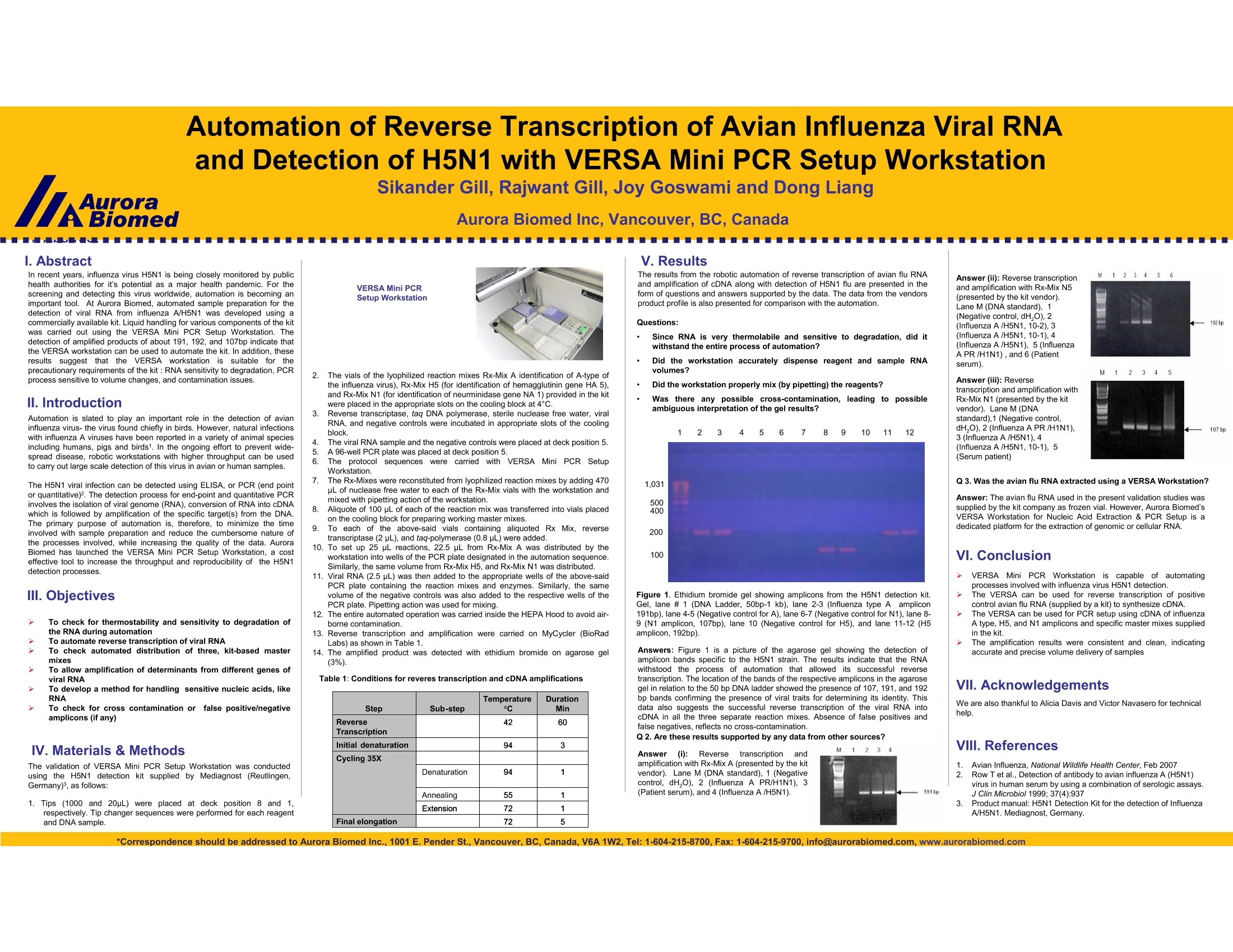
还剩1页未读,是否继续阅读?
加拿大欧罗拉生物科技有限公司为您提供《用VERSA-110nap/PCR工作站实现禽流感病毒RNA反转录及H5N1检测的自动化》,该方案主要用于其他中前处理检测,参考标准--,《用VERSA-110nap/PCR工作站实现禽流感病毒RNA反转录及H5N1检测的自动化》用到的仪器有临床制药核酸提取 欧罗拉液体处理工作站、PCR体系构建工作站 欧罗拉PCR workstation、PCR测序反应体系构建 欧罗拉液体处理工作站、欧罗拉自动化病毒总核酸纯化试剂盒、欧罗拉 实时RT-PCR检测试剂盒
推荐专场

